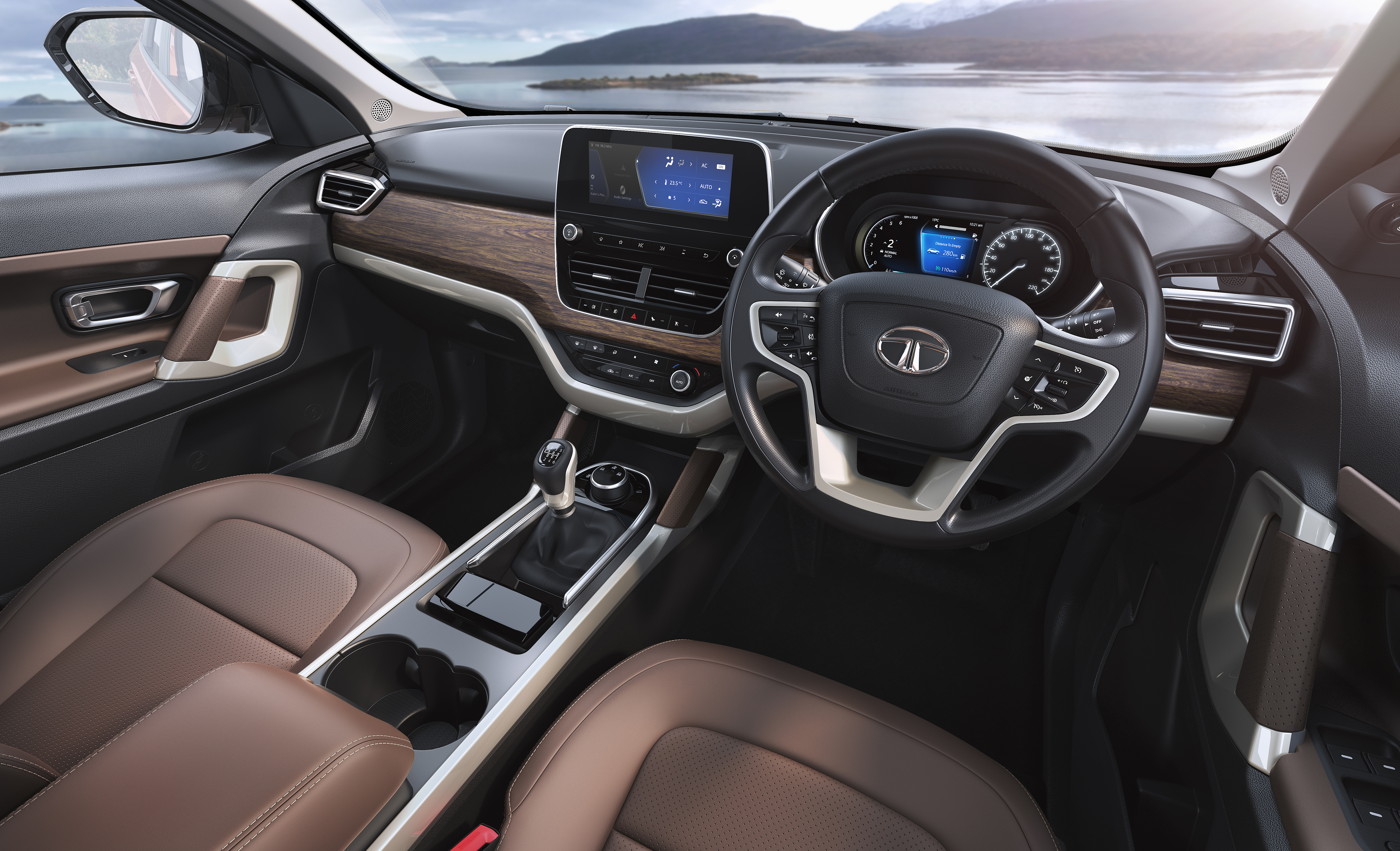
Introduction
Over a year ago The Tata Harrier created quite a buzz. It was very aggressively priced, based on the land rover platform. But the response received by the Harrier was not as expected by the Tata Motors. There was no automatic option available and some important features were missing. Additionally, the Harrier had a couple of harsh edges, similar to a loud motor.
To accomplish its actual potential Tata Motors has redesigned the 2020 Harrier with plenty of upgrades to review these weaknesses. First of all, the power output of the now BS6-compliant 2.0-litre Multijet diesel motor has been bumped up from 140hp to 170hp and the torque is unchanged at 350Nm putting it at par with the competition. But the big news is that you can finally buy the Harrier with an automatic transmission, which the company feels could account for as much as 50 percent of sales. Another big miss was the sunroof; and to make up for not having one at launch, Tata Motors has given the Harrier what it claims is the largest panoramic sunroof in its class, comes with rain-sensing and anti-pinch functionality. The powered driver’s seat, electronic stability control (ESP) makes the SUV much more pleasing. Let’s see how much better do all these upgrades make the 2020 Harrier, and just how much nicer is to drive? We try to answer these and other important questions in our review below.
First drive
As always built quality and refinement was an issue with the original Harrier. Tata Motors, has also worked hard to reduce or improve the overall noise, vibration and harshness (NVH) while upgrading the engine to BS6. The engine mounts are now a bit softer, additional sound insulation material has been used and most importantly, the injection timing of the BS6 engine has been calibrated to give more progressive combustion to reduce that harsh diesel clatter.
The moment you start the engine improvement in NVH is immediately noticeable throughout its rev range , and the engine seems much quieter than before.
The clutch is smooth but feels a bit heavy, and the engagement is not as dynamic as we would have liked. The common issue with other Fiat 2.0-litre Multijet-powered SUVs, including the Jeep Compass and MG Hector.
The additional 30bhp this engine puts out is easily noticeable. There is a fair bit of turbo lag below 2,000rpm, but there is a stronger thrust in the powerband, the Harrier pulls strongly to the redline of 5,000rpm.
The improvement in performance is significant, and we managed a 0-100kmph mark in 11.25sec as compared to 12.24sec for the 140bhp version. We get strong in-gear acceleration and overtaking capability in the new 2020 Harrier, with the gearing ratios are unchanged
The drive modes work well. In Sport mode, the engine feels quite willing and responsive. For better economy, Eco mode comes handy in city traffic.
Tata has done a great job integrating the new, Hyundai-sourced 6-speed automatic transmission with the engine. The response from standstill is best and the gearbox is meant for start-stop city driving. There now is a bit of a delay and even a hint of hesitation serving up the right gear when we hit hard the accelerator peddle. There are no paddle-shifters, and in manual mode shifts not that quick but after all its a typical torque converter unit. Interestingly, in manual mode, the box will only shift up automatically when the engine brushes against the redline and will only shift down when engine speeds fall below 1,500rpm. It holds on to a gear for the most part of the engine’s powerband, giving you a better sense of control, especially on a winding road.
Ride & Handling
The Harrier feels planted on the highway and gives you confidence. The suspension set-up is largely unchanged, which means its damping is on the firmer side. You can feel the stiffness on uneven roads and, the Harrier doesn’t ride as flat or composed as the Compass; and neither does it dive into corners with the same enthusiasm as the Jeep, which is still the benchmark for dynamics in this segment.
The Harrier’s hydraulic steering has the inconsistent feel and is vulnerable to a bit of torque steer. There is also steering kickback on big bumps and also there is tramlining effect on uneven surfaces. The steering weighs quite well on highway speeds, but at low speeds, it is quite heavy and requires a fair amount of effort especially while parking. The brakes lack bite and the unnecessary pedal travel isn’t consoling, but the Harrier stops viably under hard slowing down.
Interior

The interior is completely unchanged. This is mainly true of the cabin too, which looks all but identical at first glance; the ‘floating island’ centre console, the very chunky steering wheel, the wide expanse of faux wood, the part-digital instrument panel and the big comfy seats. And the brushed aluminium’ and leather door handles and grab handles on the base of the centre console look perfect.
Features
The Harrier 2020 is available in five variants, that start with XE at just 13.69 lakh, ex-showroom. You do get dual airbags but, there’s no touchscreen on this version, ESP (now standard) and projector headlamps with dual-function DRLs that work as turn indicators. The most affordable automatic version the XMA starts at 16.25 lakh, which is an attractive price. We get a touchscreen on the XMA, driving modes, as well as electrically adjusted mirrors. The top-of-the-line XZ+ (manual) and XZA+ (automatic) trims cost Rs 18.75 and 19.99 lakh respectively. It includes the huge rain-sensing and anti-pinch panoramic sunroof, six-way adjustable powered seat and diamond-cut wheels. Terrain Response Modes, an excellent JBL sub-woofer-equipped audio system and six airbags are part of the package too, but also come on the XZ and XZA variants. Dual-tone versions of the new Harrier are quite affordable, with only an Rs10,000-Rs15,000 increase in price – and this is true of the popular Dark Edition as well.
Verdict
The engine seems more punchy and hence Harrier is now more fun to drive. The new 6-speed automatic gearbox works like a charm at low and medium speeds; and with new features like the huge panoramic sunroof, the new Harrier is clearly an appealing buy. The petrol engine is still missing though. The prices starting at Rs 13.69 lakh for the base variant and go till 20.25 lakh for the top variant.


